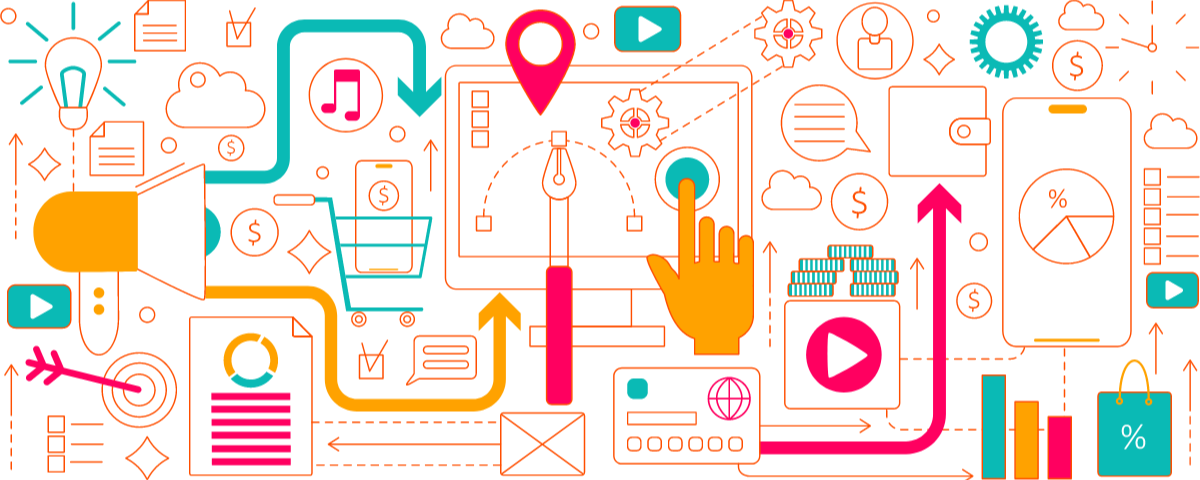4 ways to pick a Future-Proof Digital Asset Management (DAM) platform

A decade ago, Digital Asset Management (DAM) looked very different from what the space looks like today. Video editing, support for 3D models, AR and VR, as well as Generative AI weren’t even on people’s radar for DAM requirements. Today, these are standard features for an enterprise DAM solution.
As technology continues to quickly evolve, the question is: How do you pick a DAM solution that not only fits your needs now, but also sets you up for the unknown integrations, content types, and workflow needs of your organization tomorrow?
Take a moment to reflect on your current workflows. How many tools does your team use on a daily basis that are integral to their success that didn’t exist two years ago? Three? Five? More?
It's crucial to look ahead and prepare for what's coming, especially when you consider the scale of your platform. How much data did you plan to store before your deployment, compared to what you’re storing now? And does this pale in comparison to what you’ll need to store 18 months from now? As your organization grows, your DAM's footprint will and should be able to grow right alongside you.
When it comes to choosing a future-proof DAM, it's all about being ready for the unknown. Here are some tips to help you spot that ideal platform.
Find a DAM platform that’s API-First
As your organization evolves, the complexity and scale of your DAM needs will inevitably increase, necessitating seamless integration with an expanding array of tools and workflows. Opting for an API-first DAM is crucial as it guarantees the availability of robust and comprehensive API endpoints, creating a direct and efficient connection with your preferred tools and services. It's imperative to assess the vendor's capacity for rapid and effective API development and integration, mitigating the need for costly third-parties.
Make sure you ask about the frequency of new API endpoint releases and the vendor's procedure for handling custom API requests. Understanding the vendor's prioritization process for API development is vital, as it can significantly influence the operational timelines and project delivery of your team.
An API-first approach not only streamlines integration processes but also ensures that your DAM platform remains adaptable and scalable, capable of incorporating new functionalities and features in alignment with emerging technological trends and business requirements.
Make sure DAM is a priority
While it may seem unconventional to emphasize, ensuring that DAM is the central focus of your vendor's offering is crucial when selecting a DAM platform. Opt for a vendor whose expertise and primary business is DAM, rather than one who treats it as an ancillary service or a mere add-on to their primary products.
Just as you wouldn't purchase a car from a company primarily known for manufacturing windshields, you should avoid selecting a DAM system from a vendor that does not prioritize it.
Choosing a vendor with DAM as a core offering means that the product is likely to receive more attention, development, and support, resulting in a platform that offers greater functionality and better long-term value. This approach ensures that the DAM solution you invest in is not only robust at the time of purchase but also continues to evolve and improve over time, aligning with your growing business needs.
Ensure they have a product plan
It’s essential to make certain your future DAM vendor has a comprehensive product roadmap, one that keeps pace with new integrations and technologies, but also shows a deep understanding of your use cases and industry.
A vendor that lags in basic functionality or disregards current trends in the DAM space (or your industry) may not be equipped to support your evolving needs or the demands you anticipate in the future.
Inquire about the vendor's internal use of their DAM system. Utilization of their own tools for daily workflow management is a strong indicator of the vendor's commitment to continually enhancing and supporting their DAM technology. This practice, often referred to as "drinking your own champagne," signifies that the vendor not only believes in the quality of their product but also actively invests in its development and refinement, ensuring that it remains effective and relevant in the dynamic landscape of digital asset management.
Consider company growth
Consider the overall health and trajectory of the company when selecting a DAM vendor. Analyzing whether the company is in a phase of expansion or stagnation can provide insights into its stability and commitment to product development. Mergers or cost-cutting measures might suggest a potential decrease in investment towards product enhancement.
Additionally, evaluate the company's customer retention and satisfaction rates. High retention rates and positive customer feedback are strong indicators of a vendor’s ability to deliver quality service and maintain a reliable product. Don’t be afraid to go beyond reading case studies, ask for a customer referral.
These factors, combined with a clear strategic direction and consistent product innovation, can offer a more comprehensive view of the vendor's stability and the long-term viability of their DAM solution.
Conclusion:
While the future remains uncertain, arming yourself with insights into potential DAM vendors can better prepare your team for what lies ahead. By prioritizing attributes like API flexibility, a DAM focus, innovation, and company growth, you can navigate the turbulent waters of DAM selection with confidence, ensuring your investment remains future-proof in the face of changes in technology.
If you'd like to learn more about Orange Logic, and how it fits the blue-print for a future-proof DAM and or media asset management solution, schedule a call today!
Bring it all together with an intuitive, customizable DAM platform.
Cortex is an Enterprise Digital Management Platform built to grow with your business.
- 130+ custom tools
- Tailored dashboards for every user
- Unlimited digital asset storage




